
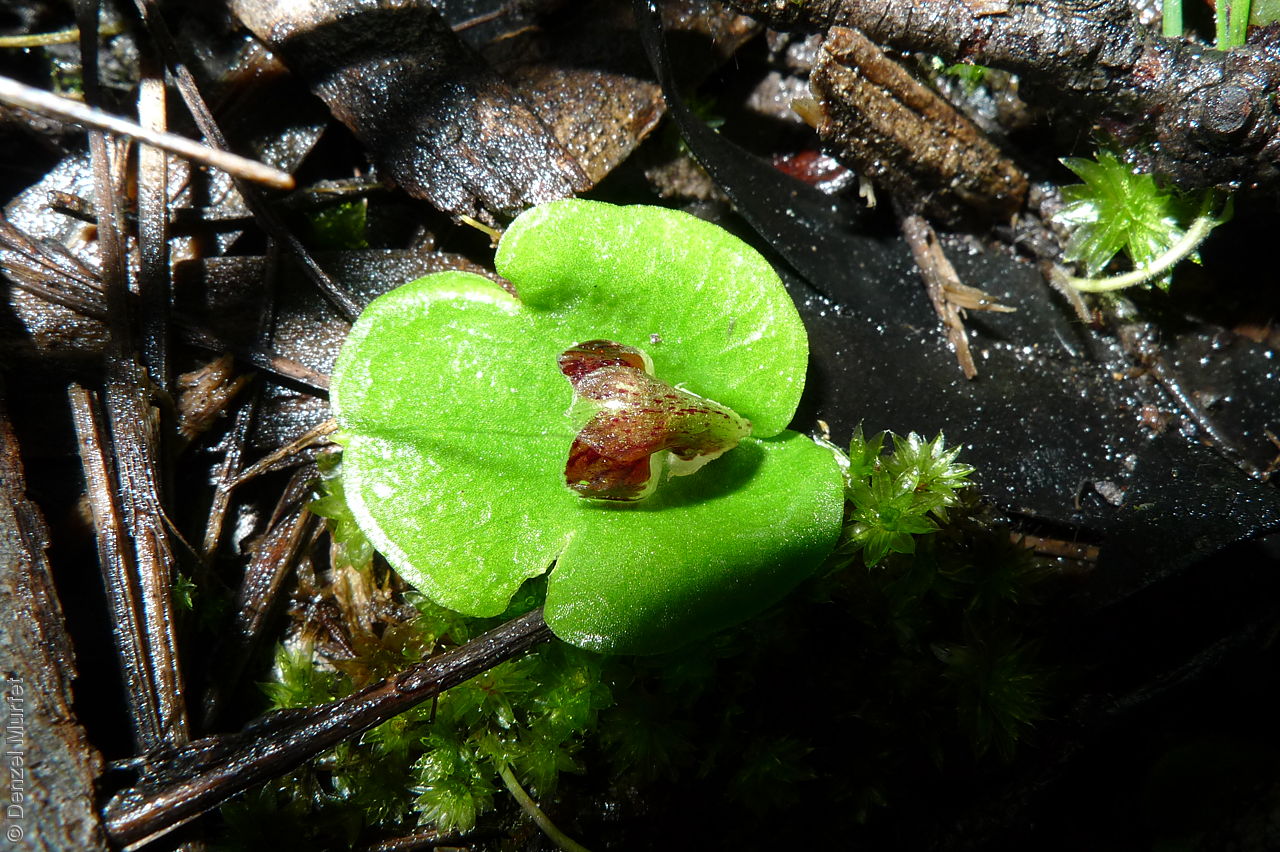





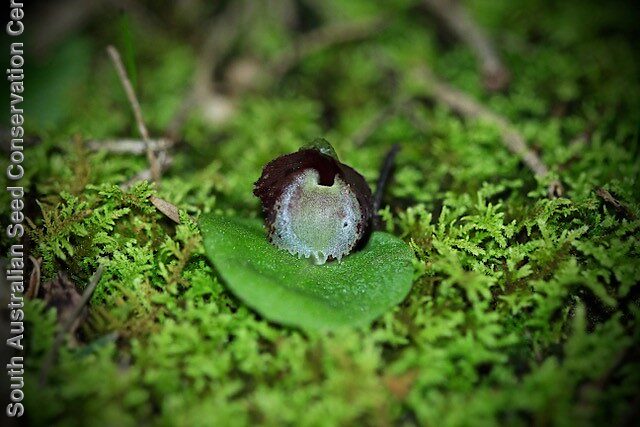
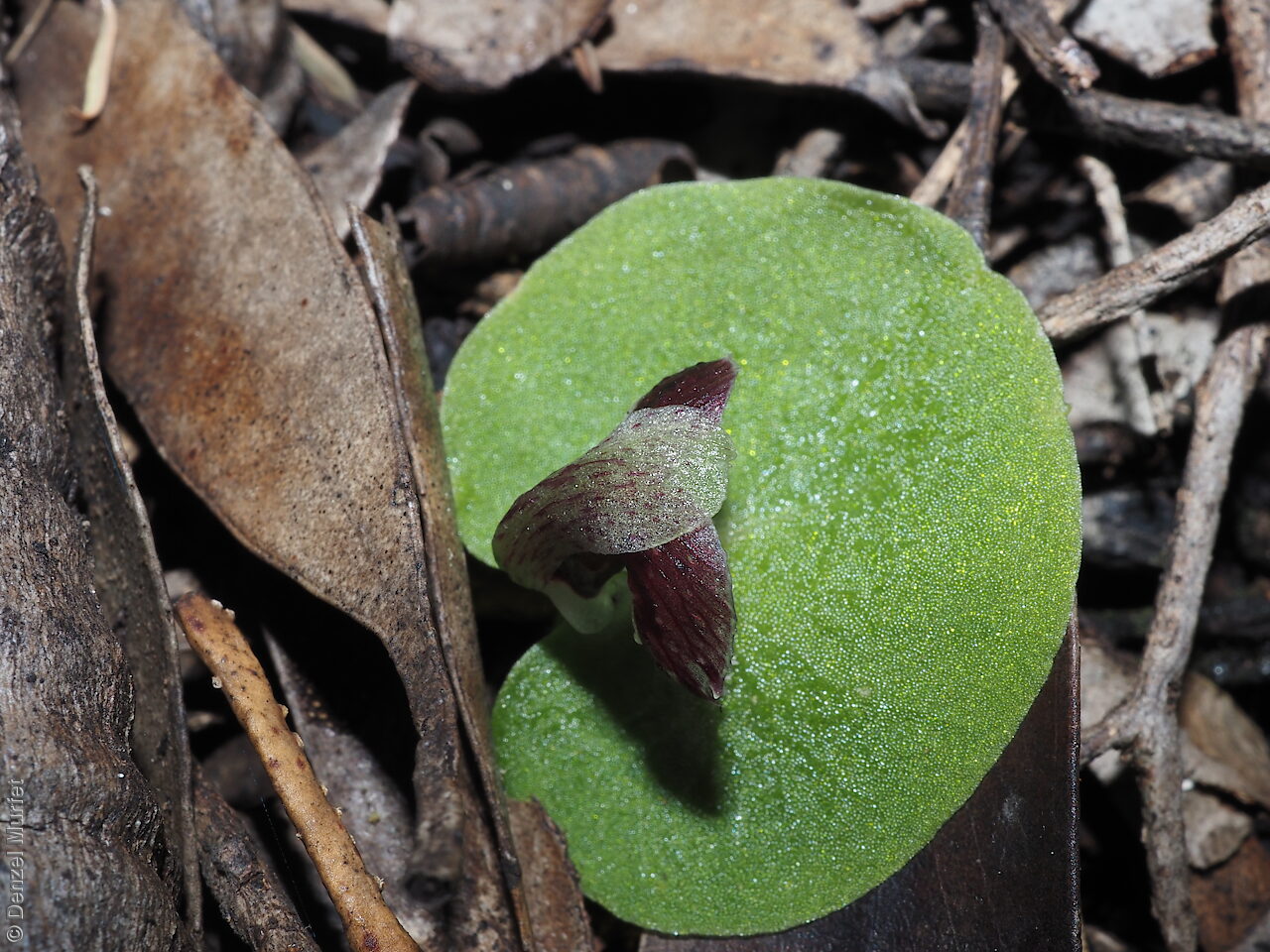

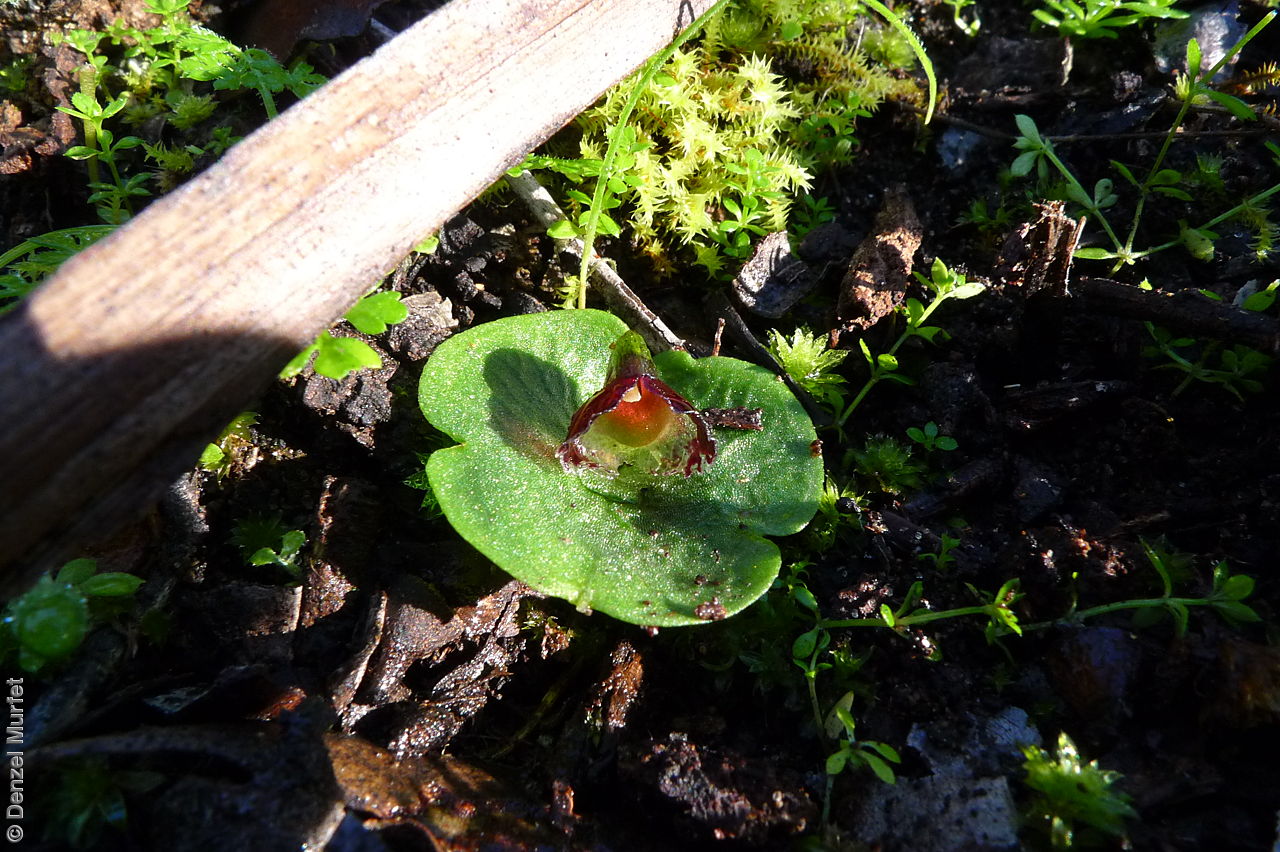
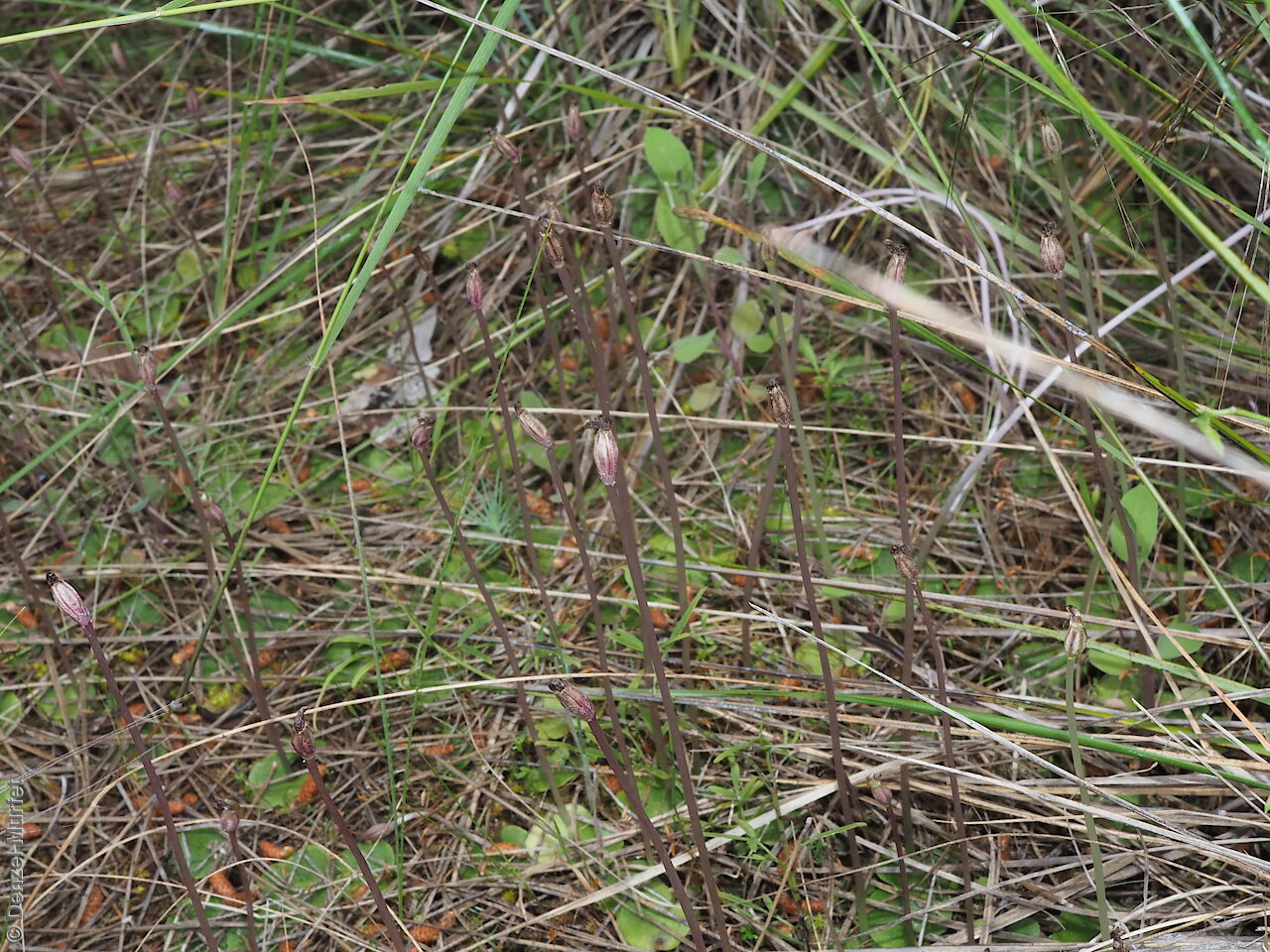


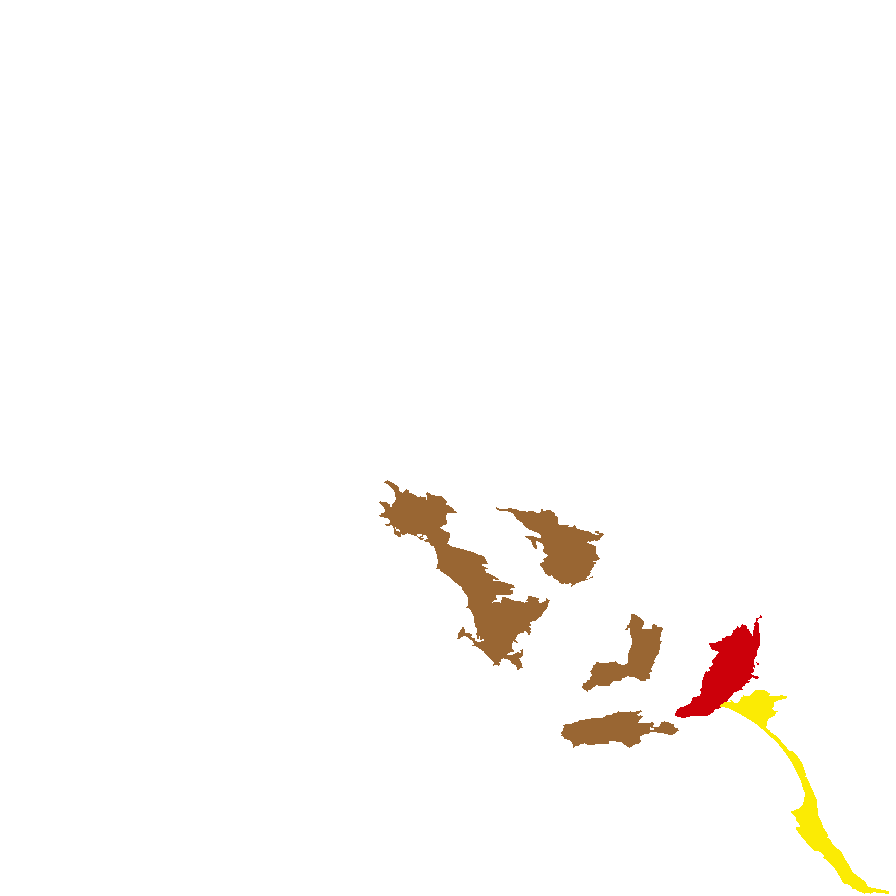
Prior names
Corybas sp. B
Corysanthes expansa
Etymology
Corybas from the Greek 'korybas' one of the dancing priests of the goddess Cybele in Phrygia, or a drunken man, an allusion perhaps to the flower's resemblance to the priest's head-dress, or to the stoop of a drunken man. Expansus from Latin meaning spread out, referring to the flared labellum.
Distribution and status
Endemic to South Australia and found on the Eyre Peninsua, Yorke Peninsula, Kangaroo Island, southern Mount Lofty Ranges and the South-east, growing in shrubland and shrubby forest in coastal areas, forming small colonies. Native. Rare in South Australia.
Herbarium regions: Eyre Peninsula, Yorke Peninsula, Southern Lofty, Kangaroo Island, South Eastern, Green Adelaide
NRM regions: Adelaide and Mount Lofty Ranges, Eyre Peninsula, Kangaroo Island, Northern and Yorke, South East
AVH map: SA distribution map (external link)
Plant description
A terrestrial orchid with a single broad heart-shaped or almost round leaf to 30 mm long and 30 mm wide, bright green on the upper surface and silvery green on the lower side. Flower single, erect, reddish purple with greenish or translucent areas, to 15 mm long. Dorsal sepal is mostly transparent green, to 16 mm long and 7 mm wide, erect near its base then curves forward, partly covering the labellum. Lateral sepals are linear but tapered, to 5 mm long, joined to each other at the base. Petals are lance-shaped, about 3 mm long, curved. Labellum is longer than the dorsal sepal and forms a tube about 4 mm long near its base, before curving and flattening into a concave dish shape, upper part reddish purple grading to white from the centre down, teeth or serrations long around the edges. Flowering between July and August. Fruits are tiny brown papery ellipsoid capsule. Seeds are very small with a long cylindrical translucent brown mesh-like covering.
Seed collection and propagation
Collect seeds between August and October. Collect fat capsules as they start to dry and turn brown. Pods will split and release the seeds quickly and will require monitoring. To increase the chances of collecting mature pods, it is recommended that a small breathable bag (ie. Organza bags) be used to enclose the developing capsules. Place the capsules in a container that will hold fine seeds and leave to dry for a few weeks or until the capsule split. Then carefully hold the capsule and tap it gently to release the seeds. Store the seeds with a desiccant such as dried silica beads or dry rice, in an air tight container in a cool and dry place, a refrigerator or in liquid nitrogen.